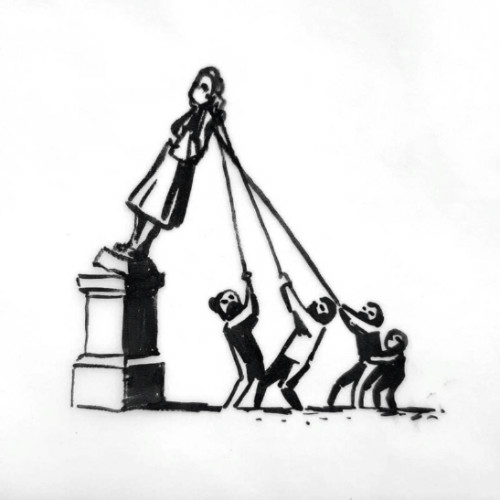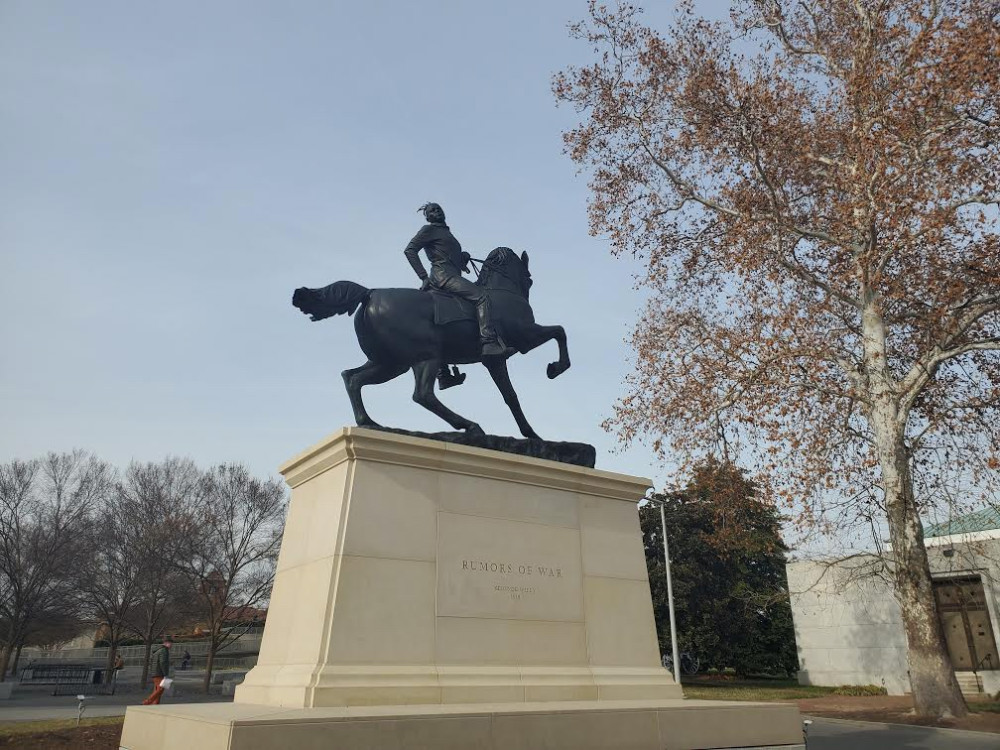Washington DC, US
Thomson Reuters Foundation
As protesters fell monuments honouring slave owners, Confederates and disgraced white leaders of decades past, their downfall opens a debate over who should rise up to take their place.
The United States had at least 780 Confederate monuments as of last year, according to a study by the Southern Poverty Law Center. Some have already been taken down, and many have been targeted in the protests over racial injustice.
From Dolly Parton to Donald Trump, the internet is already buzzing with ideas for new heroes.
More than 20,000 people signed an online petition to replace Confederate statues with monuments to the country singer in Tennessee, while Donald Trump, Jr, called for a movement on Twitter to replace any statue torn down with one of his father.
The US is not the only country having this debate.

An artwork by Banksy is seen in this image obtained from his Instagram account. PICTURE: Instagram/@banksy
After protesters in the English city of Bristol toppled a statue of slave trader Edward Colston, street artist Banksy proposed it be put back up…along with life-size statues of the protesters pulling it down.
Those calling for the removal of Confederate monuments say they are symbols of white supremacy, since the men they honor made their names defending the cause of slavery. Others say they are a part of Southern heritage and should remain.
“A fitting replacement would be monuments that honour American democratic values – that promote fairness and inclusion and elevate all our citizens,” said Edna Greene Medford, Professor of History at Howard University.
“Erect monuments to those who lost their lives in defending the rights of all Americans, not just the privileged,” she told the Thomson Reuters Foundation.
For example: James Chaney, Michael Schwerner and Andrew Goodman – civil rights workers murdered in 1964 by the Ku Klux Klan.
Several online petitions and opinion pieces call for more statues of Black people, from politicians to war veterans to celebrities.
In one example, artist Kehinde Wiley’s 2019 Rumors of War statue depicts a young Black man on horseback. It stands around the corner from Monument Avenue in Richmond, Virginia – where Confederate generals such as Robert E Lee are carved on horseback in similar form.

Kehinde Wiley’s ‘Rumors of War’. PICTURE: Tyler Walter (licensed under CC BY-SA 4.0)
Some advocate moving beyond statues of individuals.
Historian Kevin Gaines said he would like to see a memorial to the countless numbers of enslaved people who were separated from their families when sold. It could include inscriptions of victims’ names taken from archives, he said.
“I prefer commemorating this collective experience to the usual elevation…of an individual historical figure,” said Gaines, Julian Bond Professor of Civil Rights and Social Justice at the University of Virginia.
Monuments do not have to be statues of men towering over us in stone, said Paul Farber of the Monument Lab, a public art and history studio in Philadelphia.
“We’re going to continue to have monuments because memory and history matter, but we have an opportunity to re-imagine them in ways that don’t mark history as complete and frozen.”
Artist Tania Bruguera conjured up a new type of monument when she created a statue of an unidentifiable immigrant child – made in clay so it would slowly deteriorate and disappear.
In another example, artist Karyn Olivier put a mirrored box around a monument in a Philadelphia park so viewers would literally see a reflection of themselves.
Most important is involving local artists, activists and community members in the discussion of what next, rather than imposing a top-down government decision, said Farber.
“It’s going to take new systems to make new symbols,” he said.





